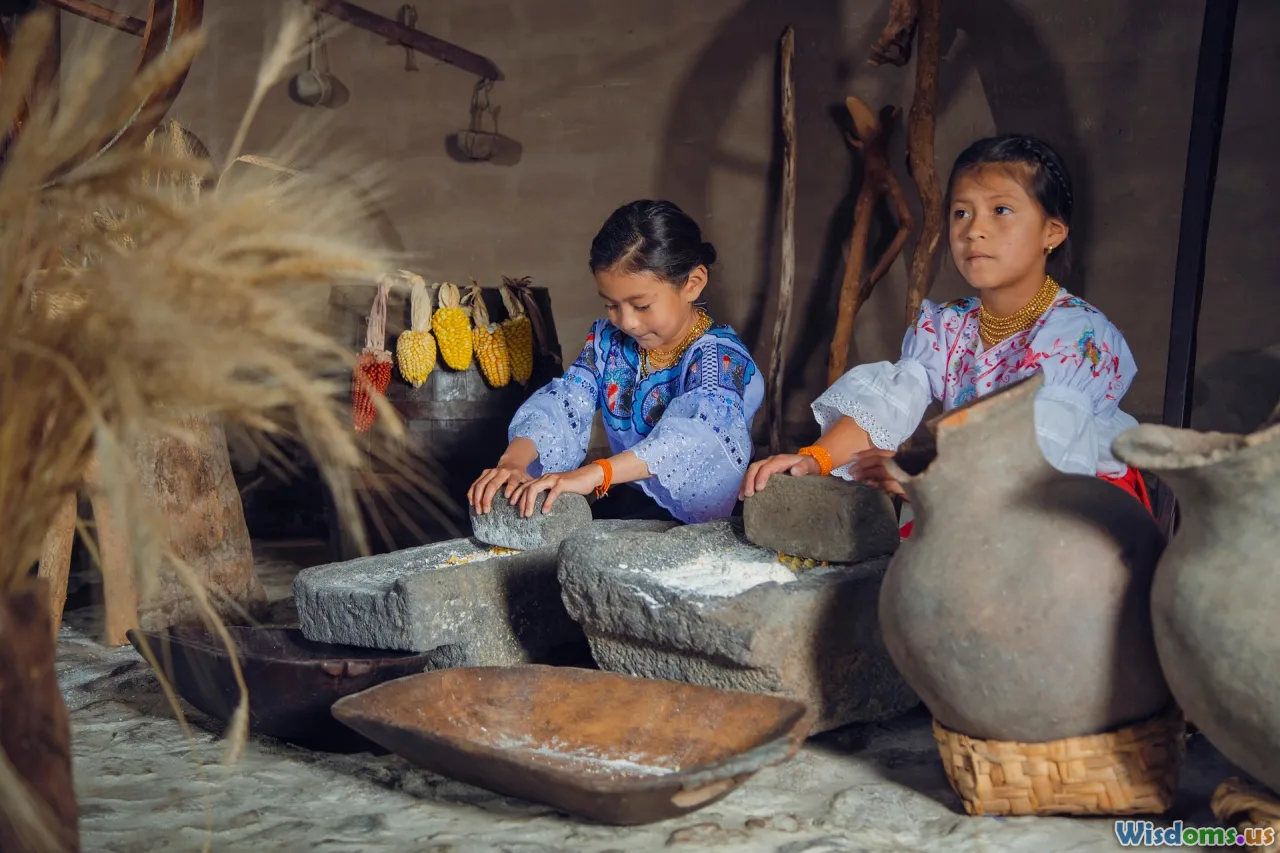
Which Ancient City Best Preserves Its Unique Traditions
9 min read Explore the ancient city that best preserves its unique cultural traditions through history, art, and community practices. (0 Reviews)
Which Ancient City Best Preserves Its Unique Traditions?
From the bustling modern metropolis to untouched villages, the preservation of cultural identity through traditions often fluctuates beneath the tide of time. However, some ancient cities have gleamed as living museums—places where traditions are not relics but vibrant, everyday realities. This article embarks on a journey to identify which ancient city best preserves its unique traditions, offering insights into the living heritage, community practices, and cultural continuity that defy a rapidly globalizing world.
Introduction
Across the globe, ancient cities tell stories etched into their architecture, languages, dances, and rituals. But what does it truly mean to preserve a tradition? Is it maintaining the original customs in their purest form, or adapting old worlds to accommodate new realities while honoring historical roots? The city that carries the torch for unique tradition preservation easily blends cultural authenticity, intergenerational transmission, and community determination.
Today, while countless cities rekindle or reinvent historic traditions, only a select few serve as strongholds—resilient bastions where centuries-old cultural norms linger as vital and practiced parts of life. This article highlights such remarkable candidates, including Varanasi (India), Kyoto (Japan), and Fez (Morocco), each a champion for tradition through its own singular lens.
Varanasi, India: The Eternal City of Spiritual Heritage
A Living Spiritual Epicenter
Nestled on the banks of the sacred Ganges River, Varanasi is widely regarded as one of the oldest continuously inhabited cities globally, with its history stretching back over 3,000 years. Yet, more than its remarkable age, Varanasi thrives as an epicenter of spiritual traditions virtually unchanged since ancient times.
Hindus flock here daily to perform ritual baths, offer prayers, and partake in the deeply symbolic Ganga Aarti ceremonies at dusk. These gatherings are awe-inspiring, blending music, fire, and devotion, epitomizing the spiritual pulse of the city.
Traditional Crafts and Scholarship
Beyond spirituality, Varanasi is renowned for its handwoven silk sarees, an artisanal craft maintained for centuries with meticulous skill. The city’s role as a center of Indian classical music and Sanskrit scholarship also persists robustly, demonstrating how knowledge traditions are actively preserved.
Real-World Insight: According to UNESCO, efforts to promote and protect the intangible cultural heritage linked to Varanasi’s crafts and spiritual ceremonies are ongoing, underscoring the city’s significance.
Kyoto, Japan: Guardian of Japan’s Classical Culture
A City Rooted in Imperial Legacy
Kyoto’s heritage is deeply entwined with Japan’s imperial history, having been the nation’s capital for over a millennium. This rich legacy is manifest in a wealth of preserved shrines, temples, and meticulously maintained gardens that embody traditional Japanese aesthetics and religious practices.
Festivals and Artisanal Dedication
Kyoto’s traditional festivals, particularly Gion Matsuri, have been celebrated since the 9th century. The gowns, floats, and rituals involved reveal layers of customs permeating into modern times, witnessing vibrant communal participation.
Handicrafts such as pottery, textile dyeing (like Kyo Yuzen), and tea ceremony etiquette remain integral aspects of everyday cultural expression. Communities and educational institutions play active roles ensuring these practices are transmitted faithfully to younger generations.
Quote: Kazuo Yagi, a renowned Japanese ceramist, once asserted, “Kyoto isn’t just a city but a custodian of the Japanese spirit,” highlighting the city’s vital cultural role.
Fez, Morocco: The Cultural Heartbeat of the Maghreb
An Ancient Medina Frozen in Time
Fez, founded in the 9th century, preserves one of the world’s largest and best-preserved walled medieval cities. Unlike a fractured relic, Fez’s medina remains a living organism where traditional hammams, souks (markets), and tanneries hum with timeless energy.
Sustaining Traditional Trades and Learning
The city’s famed leather tanning tradition persists using ancient methods passed down over generations. This artisanal process reflects a deep respect for natural materials and sustainable practices rooted in the past but relevant today.
Moreover, the University of Al Quaraouiyine, founded in 859 AD, represents a legacy of scholarship and religious education unbroken for over 1,000 years, reinforcing Fez’s standing as a hub of intellectual tradition.
Data Point: The medina of Fez is a UNESCO World Heritage site since 1981, emphasizing global recognition of its cultural preservation.
What Makes Tradition Endure? Key Factors
To understand why certain ancient cities are better tradition-preservers, examining the following aspects is crucial:
Community Engagement
Involve cultural bearers in everyday life, ensuring traditions are not museum pieces but practical, celebrated practices. Community festivals, apprenticeships, and family rituals keep customs vibrant.
Institutional Support
Heritage conservation is propelled by dedicated institutions—UNESCO designations, local heritage bodies, and educational centers cultivate awareness and resources.
Adaptability and Innovation
Traditions thrive when allowed to adapt organically without losing the core identity. For instance, modern Varanasi weavers integrate new designs yet preserve weaving techniques, making heritage economically viable.
Geographic and Social Continuity
Cities where descendants of founding cultures remain dominant tend to better preserve traditions compared to those experiencing mass population displacement or urban redevelopment.
Conclusion
While cities like Rome and Athens evoke classical grandeur on a global scale, when it comes to earnest preservation of unique traditions, the spotlight shines more brightly on Varanasi, Kyoto, and Fez. These cities stand as unparalleled examples of cultural continuity—where ancient ceremonies, artisanal traditions, and community life interlace seamlessly to form vibrant legacies.
Among them, Varanasi’s unwavering spiritual landscape and handcrafted traditions reflect an intimate coexistence of past and present. Kyoto’s stoic beauty and ritualized festivals bear deep cultural testimony, whereas Fez thrives as a living medieval masterpiece pulsating with artisanal life and scholarship.
Each city offers valuable lessons on safeguarding heritage, reminding us that tradition is not merely about honoring history but about forging identity and community across generations. In an increasingly homogenized world, these ancient cities inspire us to cherish and protect our diverse cultural tapestries—indeed, making the past a cornerstone of the future.
Sources and Further Reading:
- UNESCO Intangible Cultural Heritage Lists
- "The City of Sacred Rivers: Varanasi" by Wendy Doniger
- "Kyoto: Heart of Japan" by Takeshi Hamashima
- UNESCO World Heritage Centre on Fez
- Interviews with local artisans documented in National Geographic on traditional crafts
Author Note: This article seeks to inspire cultural appreciation by spotlighting real, ongoing traditions preserved through living communities.
Rate the Post
User Reviews
Popular Posts

















